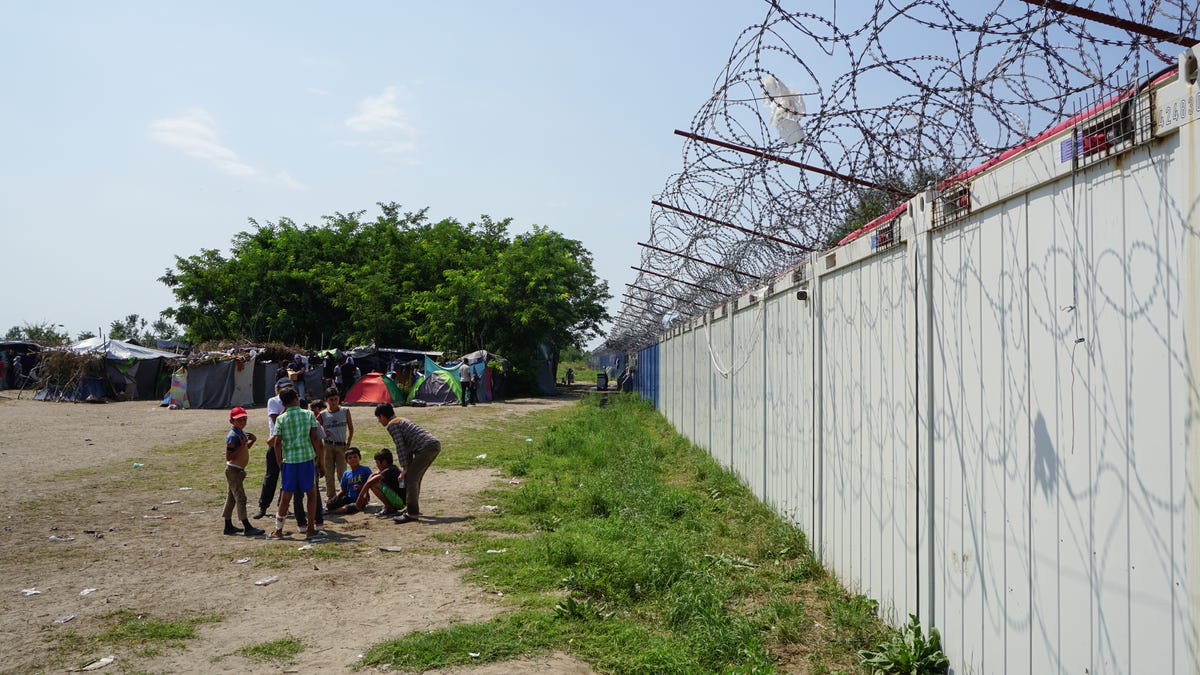Meeting the refugees tech forgot
Commentary: Traveling to Hungary for Road Trip 2016, I knew I'd meet people facing dire odds. I didn't expect how much tech would fail them.

This is part of our Road Trip 2016 summer series "Life, Disrupted," about how technology is helping with the global refugee crisis -- if at all.
It feels fitting to publish our report on refugees in Serbia when the tech world is fixated on iPhone minutiae.
At CNET, Apple's latest, greatest doodad is a major event. Our entire team stops all other work to cover the unveiling. We order pizza. For days, co-workers crack wise about dongles, and our site floods with stories dissecting every conceivable detail. It's fun.
For me this year, it came with mental whiplash.
I traveled to Hungary and Serbia in August with my colleague and friend Shara Tibken, assigned to document tech's role in Europe's refugee crisis. I knew from my co-workers' earlier reports that I would meet people in desperate circumstances. I didn't anticipate how much tech would fail them.
At the makeshift border camp in Horgos, Serbia, a refugee boy built a toy out of discarded boxes and Band-Aids.
Last week one of the world's most powerful companies touted how its technology would make our lives better. Then I'd flip to my reporter's notebooks from Hungary and Serbia, and remember all the ways tech is failing the people stuck there.
I'd pitch a story about AirPod outrage one day. The next, I'd relisten to a taped interview and hear a refugee quietly recount how the people crammed with him in a smuggler's truck were maimed or killed when it crashed and flipped over.
Technology is a useful tool only to those able to realize its potential. It accentuates the effectiveness of people with resources, but falls short of helping the powerless. Too often, the refugees we met were powerless.
But the most demoralizing gulf between problem and tech solution emerged as we investigated border brutality.
I felt jolted when I learned details of the alleged violence against people who cross Hungary's border fence. In one report, a refugee claimed police beat him with batons while taking selfies and laughing, "Welcome to Hungary." Another said uniformed officers blinded him with pepper-spray, then forced him back through a hole in the fence, kicking him as razor wire tore at his hands and legs.
Prepping for our trip, I caught wind of a digital questionnaire the Hungarian Helsinki Committee created to better document evidence of abuse so victims could take legal action. My reporter instinct fired up: finally, a lead on a tech tool tackling one of the most abject problems here.
But as we spoke to aid groups at the border, none told us they were using the form. The Hungarian Helsinki Committee said later the form has been filled out only seven times, out of the 350 reports it has received. The form is available only in English, the committee explained, and requires continuous internet connectivity, crimping its effectiveness.
The more we met instances of tech falling short, the angrier I grew.
Like most knee-jerk fury, mine was naive. The tech world is failing to solve these problems, yes, but so are governments and international organizations -- it's a situation with no easy answers.
The difference is that governments and NGOs must address these problems. The tech world can ignore them. And as we scrutinize the distinction between the black and jet black of the new iPhone 7, the absence of tech in Serbia and Hungary felt like apathy.
Until I was assigned to go to Hungary, I was oblivious. I'm not the right messenger to speak to anyone about inaction.
Maybe Nina Kov is.
Kov is a Hungarian choreographer. Last year, at the height of Hungary's influx of refugees, she put her life on hold and built an app. Without any programming experience to speak of, she spearheaded the InfoAid app to provide real-time details in seven languages to migrants and refugees passing through Hungary.
With my assignment done, I'm closing this chapter, but she's not. So I'll leave you with her words, rather than mine.
"I hope that our app just helps people to see that there is always something you can do. It's very important if you feel helpless, if you feel maybe guilty, or if you say to yourself there's nothing I can do. It's not true," she said. "There is always a lot you can do. Just do it."

